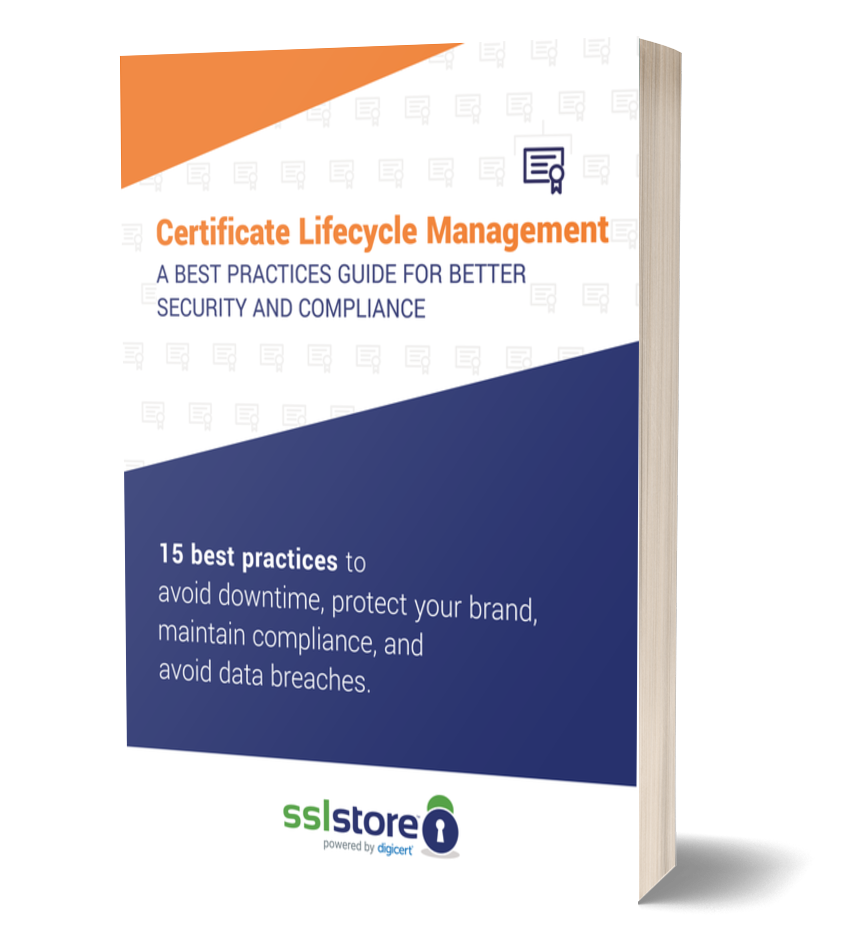Certificate Lifecycle Management Best Practices
*Information collected on this page will be used to send your eBook, and for marketing purposes. Learn More…

Don’t make the same the mistakes Yahoo, Equifax, Home Depot, LinkedIn, and Ericsson did.
Yahoo, Equifax, Home Depot, LinkedIn, and Ericsson. Nearly every week, yet another well-known brand makes headlines for all the wrong reasons: hackers gain access to their customer data; a certificate error causes their website to go down; or investigators fine them for compliance violations. This checklist will help you implement certificate management best practices to avoid similar problems for your company.
Avoid the 4 Horsemen of the Certificate Apocalypse:
- Expensive Outages & Downtime
When certificates expire, websites break, applications go down, and business lurches to a halt. And not just your business — anyone relying on your organization will experience outages and downtime, too. For example, Ericsson had a certificate expiration in 2018 that cut cellular service for 32 million people for several hours. - Angry Customers & Partners
In business, both on- or offline, trust is currency. Your customers and partners trust you to be open, easily identifiable, and to have services available. When that doesn’t happen, your brand and reputation can suffer long-lasting damage. More than a year after the Ericsson incident, their customers are still angry. In fact, one of the company’s partners reportedly received up to £100 million from Ericsson as compensation for the downtime. - Regulatory Penalties & Non-Compliance Fines
Encryption and authentication are critical components of just about every compliance and regulatory framework. That means digital certificates are, too. A Ponemon Institute study found that certificate mismanagement costs the average enterprise just over $7.2 million per year due to failed audits and regulatory penalties. - Critical Data Breaches
Certificate expiration is far more treacherous than just an HTTP browser warning. It can open the doors for far greater attacks. An expired digital certificate shielded the Equifax data breach from detection for 76 days because it knocked out the company’s traffic inspection capabilities. Two years later, the credit bureau is still reeling, with costs at $1.4 billion and still rising!





































![A Look at 30 Key Cyber Crime Statistics [2023 Data Update]](https://www.thesslstore.com/blog/wp-content/uploads/2022/02/cyber-crime-statistics-feature2-75x94.jpg)




5 Ways to Determine if a Website is Fake, Fraudulent, or a Scam – 2018
in Hashing Out Cyber SecurityHow to Fix ‘ERR_SSL_PROTOCOL_ERROR’ on Google Chrome
in Everything EncryptionRe-Hashed: How to Fix SSL Connection Errors on Android Phones
in Everything EncryptionCloud Security: 5 Serious Emerging Cloud Computing Threats to Avoid
in ssl certificatesThis is what happens when your SSL certificate expires
in Everything EncryptionRe-Hashed: Troubleshoot Firefox’s “Performing TLS Handshake” Message
in Hashing Out Cyber SecurityReport it Right: AMCA got hacked – Not Quest and LabCorp
in Hashing Out Cyber SecurityRe-Hashed: How to clear HSTS settings in Chrome and Firefox
in Everything EncryptionRe-Hashed: The Difference Between SHA-1, SHA-2 and SHA-256 Hash Algorithms
in Everything EncryptionThe Difference Between Root Certificates and Intermediate Certificates
in Everything EncryptionThe difference between Encryption, Hashing and Salting
in Everything EncryptionRe-Hashed: How To Disable Firefox Insecure Password Warnings
in Hashing Out Cyber SecurityCipher Suites: Ciphers, Algorithms and Negotiating Security Settings
in Everything EncryptionThe Ultimate Hacker Movies List for December 2020
in Hashing Out Cyber Security Monthly DigestAnatomy of a Scam: Work from home for Amazon
in Hashing Out Cyber SecurityThe Top 9 Cyber Security Threats That Will Ruin Your Day
in Hashing Out Cyber SecurityHow strong is 256-bit Encryption?
in Everything EncryptionRe-Hashed: How to Trust Manually Installed Root Certificates in iOS 10.3
in Everything EncryptionHow to View SSL Certificate Details in Chrome 56
in Industry LowdownPayPal Phishing Certificates Far More Prevalent Than Previously Thought
in Industry Lowdown